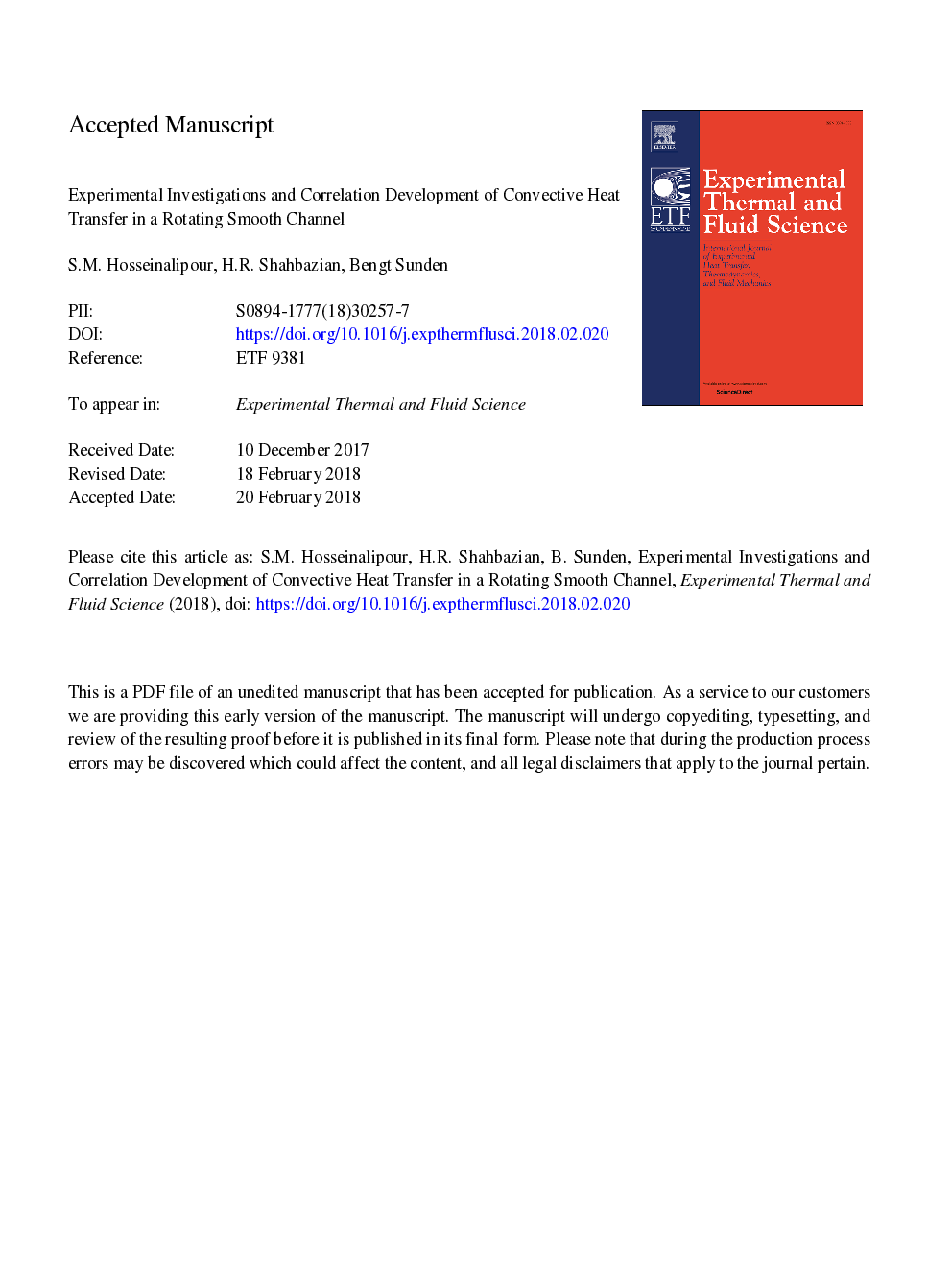| Article ID | Journal | Published Year | Pages | File Type |
|---|---|---|---|---|
| 7051771 | Experimental Thermal and Fluid Science | 2018 | 25 Pages |
Abstract
An experimental study has been carried out to investigate the effects of Coriolis force and centrifugal buoyancy force on convective heat transfer in a smooth cooling channel under rotating condition in a new rotation facility. The main motivation behind this work is to obtain required data for developing heat transfer correlations based on rotating state. In accordance with the open literature, four parameters, i.e.s Reynolds number, Rotation number, coolant Density Ratio and main flow direction were selected to study the influence on local heat transfer coefficient. Therefore, the investigation considered Reynolds number (Re) ranging from 5000 to 12,000, Rotation number (Ro) in the range of 0-0.15, Inlet Density Ratio (DR) between 0.04 and 0.1 and at the entry developing region of a square smooth channel in a new rotation test bench. Comprehensive experiment have been conducted to collect data on the local Nusselt number at the leading and trailing walls. The results show that the local heat transfer rate is enhanced by rotation on the trailing surface and reduced on the leading surface in outward flow due to symmetrical secondary vortex generated by Coriolis force. The centrifugal buoyancy effect is favorable to the heat transfer enhancement on both walls. Also, by utilizing the extensive experimental data, correlations for the local Nusselt number have been updated for the leading and trailing walls in ranges of the mentioned flow parameters, which can be used as an internal cooling boundary condition for numerical analysis of thermal stresses and cooling efficiency maximization for gas turbine blades.
Related Topics
Physical Sciences and Engineering
Chemical Engineering
Fluid Flow and Transfer Processes
Authors
S.M. Hosseinalipour, H.R. Shahbazian, Bengt Sunden,
